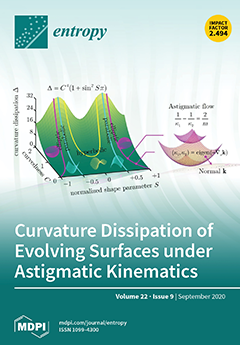We propose a new measure (
Γ) to quantify the degree of self-similarity of a shape using branch length similarity (BLS) entropy which is defined on a simple network consisting of a single node and its branches. To investigate the properties of
[...] Read more.
We propose a new measure (
Γ) to quantify the degree of self-similarity of a shape using branch length similarity (BLS) entropy which is defined on a simple network consisting of a single node and its branches. To investigate the properties of this measure, we computed the
Γ values for 70 object groups (20 shapes in each group) in the MPEG-7 shape database and performed grouping on the values. With relatively high
Γ values, identical groups had visually similar shapes. On the other hand, the identical groups with low
Γ values had visually different shapes. However, the aspect of topological similarity of the shapes also warrants consideration. The shapes of statistically different groups exhibited significant visual difference from each other. Also, in order to show that the
Γ can have a wide variety of applicability when properly used with other variables, we showed that the finger gestures in the (
Γ,
Z) space are successfully classified. Here, the
Z means a correlation coefficient value between entropy profiles for gesture shapes. As shown in the applications,
Γ has a strong advantage over conventional geometric measures in that it captures the geometrical and topological properties of a shape together. If we could define the BLS entropy for color,
Γ could be used to characterize images expressed in RGB. We briefly discussed the problems to be solved before the applicability of
Γ can be expanded to various fields.
Full article






